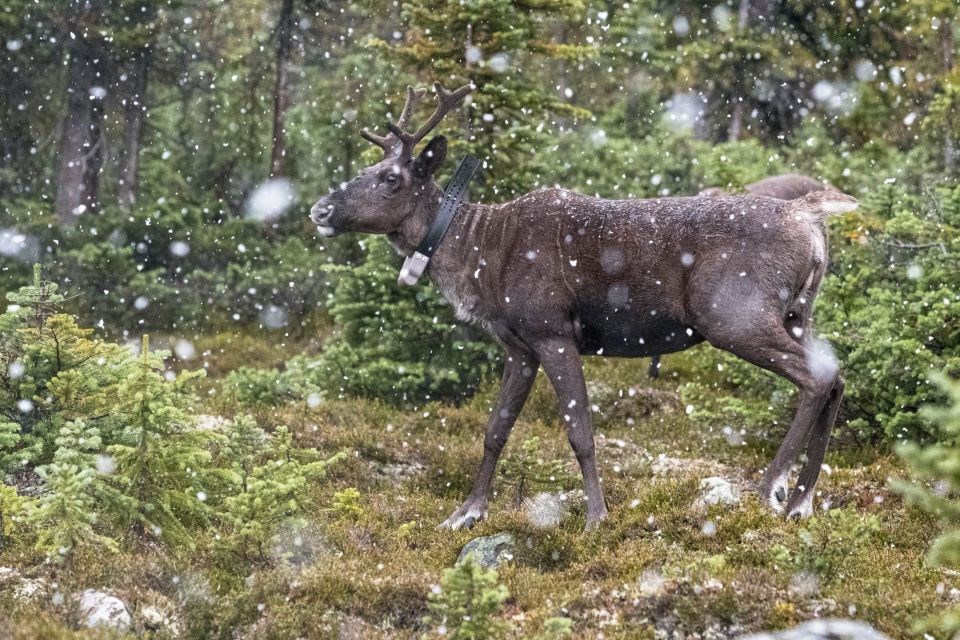The Alberta Wilderness Association (AWA) is urging the province to have greater senses of urgency and transparency when it comes to action on Alberta’s woodland caribou herds.
The conservation organization has gone public with its concerns after the Government of Alberta released its “First report on the implementation of the Section 11 Agreement for the conservation and recovery of the woodland caribou in Alberta” on Jan. 19.
The report is the first step to be taken after the Governments of Alberta and Canada signed the Section 11 Agreement (formally known as the Agreement for the Conservation and Recovery of the Woodland Caribou in Alberta) back in October 2020. It covers a five-year timespan.
Alberta’s commitment to the agreement involves the release of publicly available annual reports. This first annual report outlines progress made under the agreement for the calendar year of 2021.
The report is already way overdue, the AWA says, and that doesn’t bode well for the iconic and threatened ungulates’ future and the management of their habitat.
“We can’t comment yet on whether the Section 11 Agreement is making improvements for caribou because the data is three years old, and we need current numbers to compare against,” stated Phillip Meintzer, AWA conservation specialist, in an emailed statement.
“This report essentially serves as a baseline for assessing the effectiveness of the agreement, and we need the data from 2022 and 2023 to know if it’s working as intended.”
There is no word on when that data will become available. This leaves the AWA wondering about the current state of caribou habitat.
Another of the province’s commitments under the agreement was to finalize and implement caribou range plans before the end of 2025.
When it comes to the future of the iconic species, habitat protection is really the most important thing that we need to be doing, according to Devon Earl, AWA conservation specialist.
“It's the most urgent measure that we really need to be thinking about because doing other things like conservation breeding programs can be good to support that, but nothing is going to work in the absence of real strong habitat protection,” she said.
Alberta’s plans only entail management of caribou on provincial lands, which doesn’t include Jasper National Park’s Tonquin and Brazeau herds. The À La Pêche herd, however, is considered partially migratory and does enter the northern section of Jasper National Park from the Grande Cache area including Wilmore Wilderness Park, according to the province’s map.
“Some of their range, which is on public lands, and that has been just heavily degraded by oil and gas by forestry, by just linear disturbances. That means roads, trails, seismic lines, things like that, which also allows wolves better access into their habitat and means that they suffer more predation from wolves,” Earl said.
“If you degrade a whole bunch of habitat, what you do is you bring the carrying capacity of the landscape down. Even if you added hundreds of caribou onto the land, the number will naturally drop down to whatever the carrying capacity is.”
Alberta has some of the most heavily degraded caribou ranges in the country, she noted. Because Caribou rely on lichen from older forests, they also serve as an indicator species on the health of the ecosystem.
“When we protect species at risk like that, we're also protecting the landscapes that they live in.”
The report states that the province has identified 250,000 kilometres of legacy seismic lines within caribou ranges. Seismic lines break up caribou habitat and allow predators such as wolves easier access to hunting the larger prey. Some habitat within caribou ranges is more than 99 per cent disturbed.
Earl said the absolute minimum amount of habitat that needs to be undisturbed for herds to be self-sustaining is 65 per cent. That means there is a long way to go in dialing back disturbance and dialing up habitat restoration.
All of this speaks to why more pressing action on the Section 11 Agreement is needed. The agreement was a way for the province to avoid a federal emergency protection order and habitat protection order, which would have greatly impacted what industry would be allowed to do within Alberta’s caribou ranges.
“The problem is that this Section 11 Agreement isn't being implemented as it was written to be,” Earl said.
“We've missed a whole bunch of the deadlines. There is supposed to be caribou range plans within each of the ranges in Alberta. There are deadlines for each of them. We're way behind on all of them.”
Only two out of the 11 sub-regional range plans have yet been finalized and released, but the AWA says they are incomplete. Enabling regulations to implement these plans have also not yet been passed in the legislature.
With the plan’s expiry looming in 2025 and only the first annual report being made available to track progress, “How is anybody in Alberta supposed to know what measures have been taken to protect caribou as well as the current status of their population and their habitat if we don't have this reporting on the data? In addition to the process just being so slow, it's impossible to even know what's going on,” Earl said.



